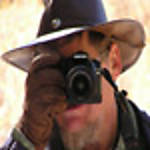1⁄35WWII German AFV Colours
Interior Colour
It is generally accepted that the interiors of most AFV's of this time were
painted using RAL 9001 'Cremewiss' or most commonly called 'Elfenbein' (Vallejo
M/C 918 or Humbrol 41). The interior of the hatches is open to speculation,
however on early vehicles it is sometimes light grey, and on most other vehicles
the factory painted the hatches in the base colour of the vehicle. The other
colour associated was Grau-grün, possibly RAL 7033, which made for a dark
interior. Most of the equipment was left black or red primer as finished in the
factory. During September 1944, an order was given to leave the interior with
the primer, this was later rescinded at the end of the year. As you can see
reference to your particular machine, as always, is the key to success. Some
items were painted a light blue colour, These include the firing safety switch
mechanism of the main gun (a rectangular box about 10cm long, on the upper right
side of the breech block), the small box on the front of the engine bulkhead and
a small box in the commanders post. Electric junction boxes were normally black
as was the radio system. It is not unusual to see some StuG III interiors
painted red primer throughout.
Under the hull / Engine compartment
Again the consensus is that the underside and engine areas of the AFV's were
left in the original Red Primer RAL 8012 unless as noted above.
Snow Covering
As seen and discussed on this site before: Heeresmitteilung (Orders), No.1128 of
18.10.1941 attempted to regulate the application of snow / winter camouflage to
vehicles in theatre in Norway, Finland, and Russia. White camouflage paste was
supposed to be applied over the Panzergrau base. However, this was not adhered
to due to ever increasing supply problems on the Eastern Front. Replacement
vehicles, and divisions newly deployed to the front were painted as and when
possible, but the crews already engaged in battle were forced to use a lime wash
as a paste substitute. Generally the chassis of the vehicle was not painted.
This is by no means a definitive list and care should be taken to remember that
many crews diluted the camouflage paste, with different thinners and some used
the paste neat. This would greatly change the overall appearance of the
vehicles. Artistic licence is possible. Also some of the vehicle types varied
slightly with the interiors, an early Tiger I is noted to have a Grey/green
engine bay too.
I have been modelling with Vallejo acrylics for only a short time and I find
them to be the most superior of paints available to the armour modeller today.
They have a pure consistency and are easy to mix. Please visit their website for
more information.
Disclaimer: I have NO affiliation to, and am not employed in any way by, Vallejo
paint Co. or Humbrol. I feel it my duty to pass on useful information for the
benefit of other modellers. I am unable to guarantee the accuracy of the
information contained as I am not in a position to compare the real thing to
swatches. However this article is the culmination of a few weeks of research and
is as accurate as I can get. The various trademarks etc here listed for our
informational purposes only, they are owned by the respective companies.
Martin Wilson (Desert-Fox), UK
|
References / Bibliography: |










